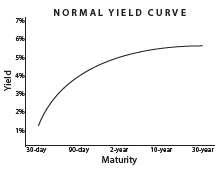TESTIMONIALS
What are people saying?
Solomon exam prep materials are the best! I have passed the SIE, Series 7, and Series 66 in less than 12 months using their materials. Their products are fantastic! The practice exams are excellent, and the probability calculator is spot on. I followed the provided customized study plan and took practice exams (over 20 lol) until my probability calculator was in the green (indicating a higher probability of passing) and the rest is history. There are no shortcuts. You must put in the work and stay disciplined, but the Solomon program WORKS and I would HIGHLY RECOMMEND them to anyone looking for amazing, comprehensive study materials to prepare for industry examinations.
Brandon Collins, Benchmark. Memphis, TN
My oldest son purchased your Solomon audio exam guide to pass his Series 7, and I did the same for the Series 65 exam at his recommendation. Although I am 62 and have been out of college for forty(40) years, I passed my Series 65 exam on my first try. This would NOT have been possible without your excellent study materials. Thank you! for the service you provide to all aspiring test takers where so much is on the line!
Most Sincerely,
David Hartzell
Cornell Capital Management
David Hartzell, Cornell Capital Management, New York
A more recent update after taking my Series 7 exam: Within one year of joining the financial industry, Solomon materials have gotten me a 100%, 4 for 4 pass rate with the SIE, S6, 63 and S7 all completed within 10 months. Once again, the materials and practice tests prepared me for the S7 exam better than I could've imagined. I will continue to refer people to Solomon, as the material, customer service, and whole experience has been unmatched.
Alex Coyne, Northwestern Mutual. Pensacola, FL
The series 7 quizzes were what made the study material the best. I just passed the series 7, it was my second time with Solomon. I Passed the SIE first attempt with their study material and it took me until the second attempt to pass the series 7 with their study material. The unlimited practice quizzes was what helped me pass. What an exciting day! I will be using them for the next 63 or 66!
Patrick Deal, Cape Securities. Frisco, TX
Thank you Solomon! I was able to pass the SIE, 7, 63 and 24 in a relatively short time period. The practice exams with answers really helped and when I had a question for The Professor, I always received a quick and accurate response. Solomon is definitely the way to go.
Seth Schader, CCO, Mercer Island, WA
I found encouragement along the way from reading other people's testimonials, so payback is to write one of my own. Solomon is the gold standard for customer service. I passed the 66, SIE first tries -- received a 69% on the 7 (failed), but passed on the 2nd attempt. I'm in awe over the outreach I received from day 1 but especially from Jeremy on how to move forward after falling short on the Series 7 - followed his advice - one of which was to get the accompanying videos and passed. Watching/studying the Chapter 5 video had a big impact. I also printed the questions I got wrong that I particularly struggled with while taking the online exams, printed and/or turned them into flashcards, then taped many of them around the house. It forced me to constantly revisit the information and moved me past a superficial understanding. I'll take a messy-looking home for a short time than having to retake a 3 hour and 45 minute exam.
Brook Langston, Everspire. Salt Lake City, UT
Read more reviews

